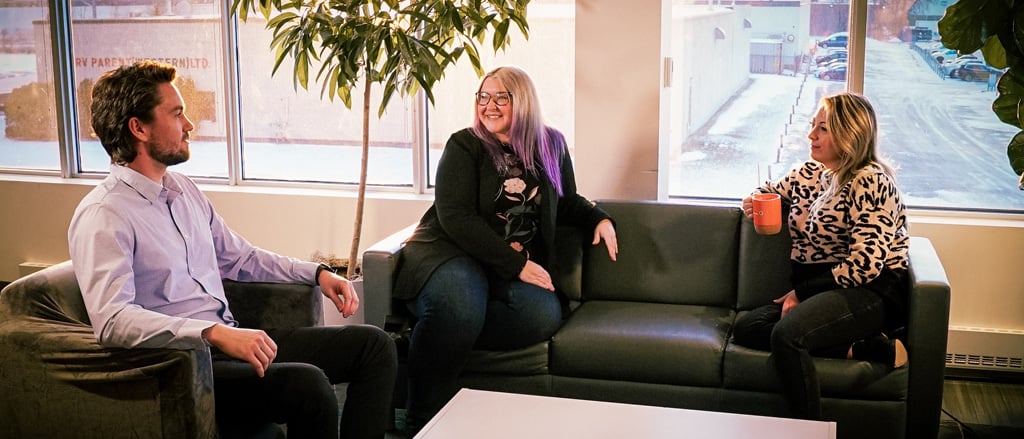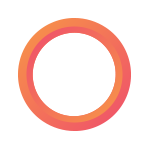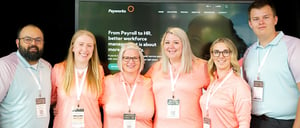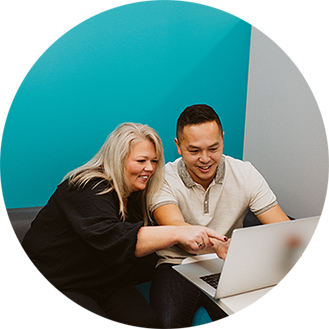
Wellness and inclusion: the what, why and – most importantly - how
As one of Canada’s Top Small & Medium Employers, we’re committed to investing in our purpose of “doing right by people” within our own organization (and beyond!).
To that end, we’ve recently added two brilliant specialists to our HR team! Charli Champagne is our Manager of DEIB and Talent Acquisition, and Max Traa* is our Human Resources Specialist in Health and Wellness.
With diversity, equity, inclusion and belonging (DEIB) and wellness at the forefront of many strategic conversations across all industries and specialties, we sat down with Charli and Max – along with Jenn Johnston, our Vice President of Human Resources – to understand what these concepts mean, where they intersect, why they matter, and how organizations of any size can make a positive impact on their people.
What do we mean when we talk about “DEIB” and “wellness” in the workplace?
“Ultimately, DEIB is about creating a culture where all team members feel safe and comfortable to be their 100% true selves at work,” says Charli.
“They’re able to express ideas, share and collaborate in a way that’s authentic to them, without having to conform or fit into any particular way of thought. For us, it’s also about reaching out within our communities to embrace the diversity around us and bring those folks into the Payworks family as well.”
To Max, wellness and DEIB are intrinsically linked – not only because of how they contribute to each other (more on that below), but because, as he says, “wellness means something different to everyone!”
“It’s a very personal and individual journey that everyone needs to undertake at some point, to figure out what ‘being well’ looks like to them,” he goes on to explain. “Wellness can mean anything from being physically active to maintaining a comfortable work-life blend to feeling emotionally supported, and a million other things in between. As a business, the best definition of wellness would be: whatever your employees tell you it means to them.”
What’s the impact of investing in DEIB and wellness for your team?
“I would say that, over the last 10 years – and especially from 2020 onwards – we’ve seen a heightened focus across work culture in both DEIB and wellness,” says Jenn.
“Organizations across all sectors are embracing DEIB and wellness as their responsibility, and as a point of pride! Payworks has been steadily increasing our investments in both areas over the last two decades, and we’re so thrilled to have brought Charli and Max on board so that both of these specialties are receiving the dedicated passion and focus that they deserve.”
“Beyond the fact that it simply feels like the morally and ethically right thing to do, there’s a huge business case to be made for investing in DEIB and wellness,” says Charli.
“When you have a diverse mix of well, healthy, and engaged employees, they’ll be able to identify when they’re reaching limits and requiring meaningful rest periods, which equates to taking less unplanned time off for stress and illness, and they’re going to bring forward a more unique mix of thought processes and ideas. They’re also better able to serve a broader and more diverse client base. All of this makes any company more successful in the long run.”
“Agreed – DEIB and wellness intersect in many ways,” Max says.
“Investing in DEIB is a very proactive and effective way to bolster wellness. That enhanced feeling of belonging and inclusion and the associated reduction in anxieties about ‘where do I belong?’ have a massive positive impact on keeping wellness high before it can even start to take a dip. Unfortunately, the opposite is also true – employees who feel embarrassed, isolated, uncomfortable and like they don’t belong will not only be less engaged at work; their mental and even physical wellness can take a significant hit.”
How so? “When people feel like they can’t show up as themselves, they engage in ‘masking’ – essentially, pretending to be someone they aren’t,” explains Charli.
“This causes a lot of stress and dissonance… not only because they’re putting up a front, but also because this means repressing who they actually are and what they’re passionate about.”
“And that can be exhausting!” Max says.
“To come into that environment, day in and day out, will eventually leave you feeling completely disconnected – both from the people around you, and even from yourself.”
.jpg?width=667&height=376&name=DSC09290_edit%20(5).jpg) From L-R: Charli, Jenn and Max chatting about the best ways for organizations to improve DEIB and wellness among their employees.
From L-R: Charli, Jenn and Max chatting about the best ways for organizations to improve DEIB and wellness among their employees.
How can organizations improve DEIB and wellness among their employees?
So now that we understand why investing in DEIB and wellness is so crucial… what are some steps that employers of all sizes can take to make effective improvements at their own organizations? Jenn, Charli and Max were able to distill some great advice into five key takeaways:
1. Remembering that old saying about what happens when we assume? Start by going straight to the source.
“Your first objective needs to be to understand your workforce,” advises Charli.
“You can have the absolute best of intentions, but if you’re not taking actions that will actually be meaningful to your employees, all of your amazing work is going to fall flat.”
“At Payworks, we use a lot of different methods to invite employee feedback – engagement surveys, pulse checks, round tables, an employee-led DEIB committee… all are great ways to assess what’s important to the team in terms of wellness and inclusion,” says Jenn.
“For example, the nature of our business is that there are peak times, and we’ve heard from employees that they could use additional support when things are extra-hectic. So we’re looking at everything from therapy dogs to massages to creating rest periods after those busy times. Our team is so creative and their input is critical to making sure we actually make a difference!”
“Agreed on the creative ideas,” confirms Charli.
“These are the types of lightbulb moments that are more likely to come out of a casual one-on-one conversation than a formal survey. There’s a lot to be said for just sitting down and chatting when it comes to understanding what’s going on and getting a sense of your own organizational culture.”
2. Establish measurable and reasonable objectives for what you want to achieve…
“Once you have a sense of where you’re at, it’s time to figure out where you want to go,” says Jenn.
“Reflect on your own company brand or purpose and the feedback you’ve received, and be clear with yourself on what success would look like for your team!”
“Establishing metrics upfront is a great way to get a sense of your own progress,” adds Max.
“Once you’ve assessed employee wellness, for example, it’s much easier to say, ‘ok, if where we’re at now is point A, what could point B even look like?’”
“I totally agree, Max,” Jenn says.
“We look to our own Workforce Analytics to assess wellness on metrics like leaves of absences: everything from short-term and long-term disability to whether or not people are using their vacation time, trends in sick time, etc. Turnover is another really helpful metric to watch. All of this data is an excellent tool in establishing a baseline from which you can progress as a business.”
“One piece of advice I always give when people ask about DEIB, wellness, and how they tie together is to not get bogged down with the 500,000 things you theoretically could do and just dig into the five things you actually can do. And I say that knowing that I can be my own worst enemy there,” laughs Charli.
“But ultimately, when it comes to setting objectives, folks are going to benefit from the things you do, not the things you plan to do.”
3. … but be flexible on the tactics you use to get there.
“There are three types of interventions that a company can implement as far as wellness goes,” says Max.
“Primary interventions are proactive and target the work environment itself. These can range from benefits adjustments to DEIB initiative and beyond. Secondary interventions are reactive, and geared towards equipping employees to build resilience for future adversities – for example, stress-management techniques and mindfulness training. Tertiary interventions are also reactive, focusing on employees who are already in distress. One great example is our very own Employee Assistance Program (EAP) with Arcora, the partner with which we offer our HR Advisory Services solution. Our EAP offers a wide range of assistance, from mental health support to legal information to financial guidance. Leveraging tertiary interventions can go a long way in helping employees recover and return to work at their best.”
“When it comes to these interventions, one piece of advice I’d definitely give is not to overcomplicate things too much,” adds Jenn.
“While you do want to work within your strategy, every tactic you’re trying out is just that: something you’re trying out, which means assessing and adjusting as needed. Things change and evolve as well, including people’s needs, so it’s important to remain flexible and open . Flexibility is really important in empowering your teams to come up with ideas – mindfulness sessions, meeting-free Fridays, whatever it may be – and quieting the little voice inside that says ‘no, that can’t be done.’ Gather feedback as you go, see what’s making a difference, and keep pursuing those paths – you might be surprised at what you learn!”
4. Understand that there’s no such thing as “one size fits all” – especially when it comes to DEIB and wellness.
“Benefits were historically set up to represent the needs of whatever the majority demographic might have been in a business, but it’s rare that a benefit would mean the same thing and make the same difference for every single person in your organization,” says Charli.
“That’s not even just about what the benefits are – we need to remember that, for some employees, benefits aren’t being used because they didn’t grow up in an environment where those benefits were available, and they’re unsure how or even why they might access them. From a DEIB perspective, making benefits accessible to all is just as important as determining what those benefits themselves should be.”
“At Payworks, we’ve embraced many different facets of wellness to ensure that our diverse staff can all have their needs met,” she goes on to explain.
“For example, in recent years we’ve broadened the scope of our wellness credit to support what an individual employee sees as promoting their personal wellness. We also have a wonderful Employee Assistance Program (EAP) to support mental wellness, which again looks different for everybody.”
“Three words to remember: accessible, flexible and accommodating,” says Max.
“As Charli says, it’s up to the organization to remove barriers to wellness, even if those barriers are invisible or something you might not have personally experienced. And flexibility and accommodation go hand-in-hand. If something is helping an employee to achieve wellness, we should be asking ourselves how we can help and support them on that path. They know themselves and their needs better than we ever could.”
5. Leaders: model the behaviours they’d like to promote with their teams.
“I recently read a Harvard Business Review article that talked about creating space before and after a vacation,” shares Jenn.
“So let’s say you’re using five vacation days – you block off your calendar for seven work days to ease the transition into and out of vacation. We’ve tried it as an HR team – yes, even me – and it’s been working really well!”
“It doesn’t mean much for an organization to say they support a healthy work-life blend if the leaders on the team aren’t reinforcing that idea with their own actions,” says Charli.
“It’s up to them to set the tone and lead by example to avoid burnout – both for themselves and their own teams. One idea is to celebrate those who do set those boundaries, as much as we celebrate those who consistently go above and beyond their regular working hours!”
“For me personally, I’ve found that Payworks really walks the talk when it comes to work-life blend,” she adds.
“When I first started here, I was a little unsure if I wanted my personal phone to be my work phone because I wasn’t sure if I’d be fielding emails all evening and all weekend. I was so appreciative of the respect I felt – at all levels of the organization – when it came to striking a balance.”
Whether you’re leading a handful of folks or a team of hundreds, Payworks’ HR solutions can help you focus on your people, not your paperwork. Simplifying all HR processes in one secure, cloud-based system can get you out of the weeds and back to your passion: nurturing a thriving team and building an engaging environment. Learn more: payworks.ca/human-resources.
* Since the date this article was originally published, Max has completed his term position at Payworks.
These articles are produced by Payworks as an information service. They are not intended to substitute professional legal, regulatory, tax, or financial advice. Readers must rely on their own advisors, as applicable, for such advice.














